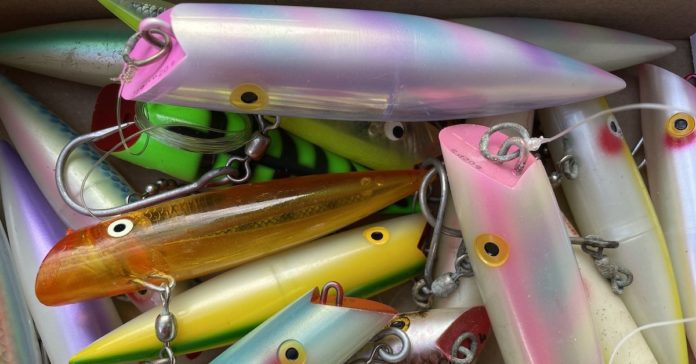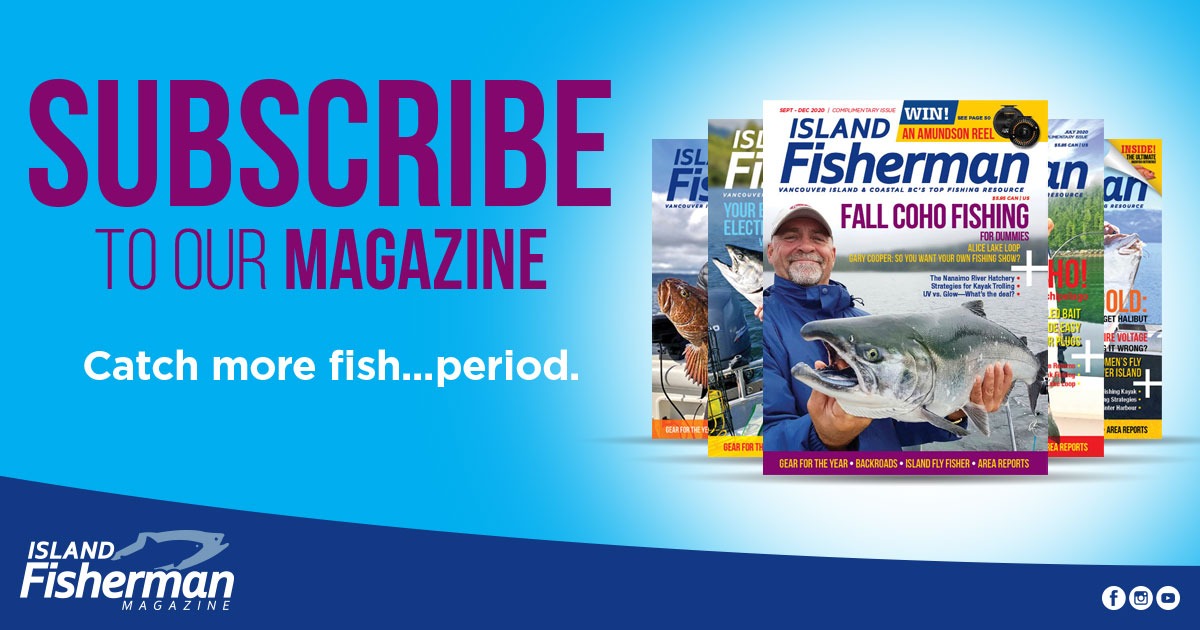There are so many types of plugs on the market, and every one of them is unique. There is no correct way to set up a plug for fishing; rather, it depends on the action you want to achieve at a given trolling speed. What follows are some tips and ideas for how to tune your plugs to achieve the action you want.
Tow Eye Adjustment
Tow eye adjustment is the first thing to focus on when you find your plug swimming towards one side rather than achieving the erratic side-to-side plug action you want. Specifically, I’m referring to the screw-type tow eyes you’ll find on plugs from Fishinator, Best Lure Co., Lyman, and others. First, tie a knot onto the tow eye and troll the plug in the water. See which side it favors more. Take your pliers and twist the tow eye slightly the opposite direction of the side it is favoring. Now your plug should be swimming in a straight line with the proper action. It’s best to have your tow eye straight and your hook eye lined up straight with the plug before trolling the first time.
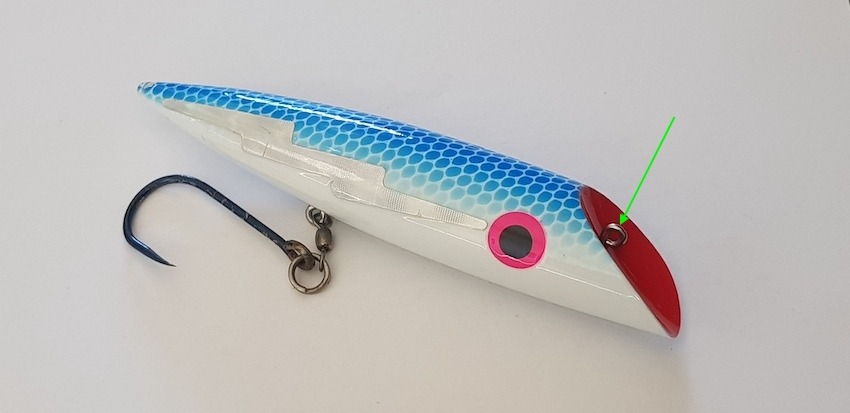
Tow Knots
Tow knots will affect your plug action differently at different trolling speeds. Normally fishermen like to tie a tight knot like a uni or trilene knot to the tow eye of the plug. These work fine, but they don’t allow the plug to develop erratic action at trolling speeds lower than 2 kts. At a slow troll, you want to use a non-slip loop knot. This will allow the plug to move freely and naturally. I find this knot will work up to a 3-kt speed before it starts to wobble too much. Tie a tight knot when trolling above 3 kts. This trick works on all different types of plugs. Give it a try and see the difference.
Tow Knot Position
Tow knot position on the tow eye affects the dive angle and plug action. Have you noticed that most of the time the knot is in the middle of the tow eye when you are trolling? This is okay, but you can adjust that by tying a false knot to help position the tow angle.
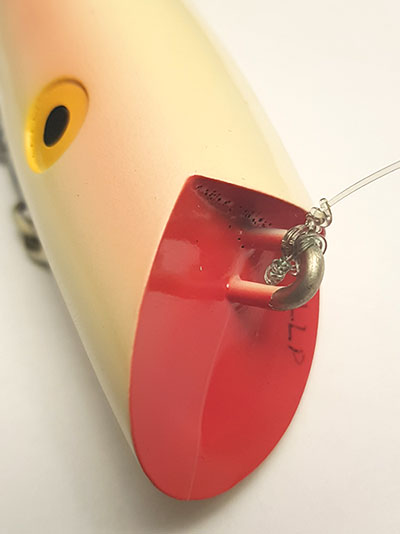
If your tow knot is at the top of the tow eye, you will have a diving plug action. This allows you to troll at a slower speed. If your tow knot is at the bottom of the tow eye, you will have a lazy plug action. This allows you to troll faster without the plug spinning. This works on all types of plugs.
Hooks and Split Rings for Plugs
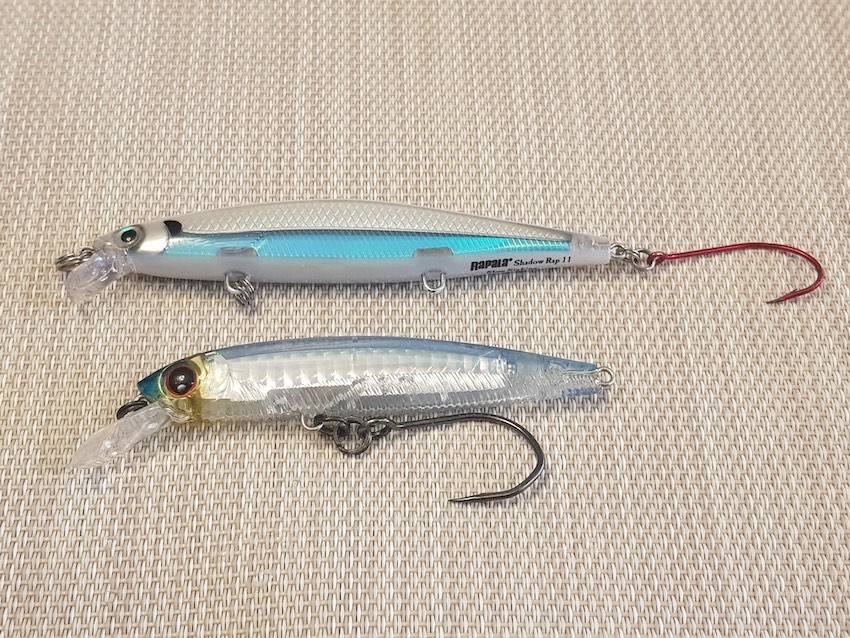
You’ll want to be sure to use the right hook and split ring size to balance the plug. Rapala plugs and others are tuned to be neutral or “head heavy” with the right hooks and split ring sizes, except shovel-nose plugs, which work on a different hydrodynamic principle. Bigger hooks and split rings affect the balance and action. If you want to increase the hook size at the rear of the plug, then you have to increase the split ring size at the tow eye, remove the other hooks, and add or move a split ring towards the head of the Rapala or other brand plugs. When tuning Rapala-style plugs, your final goal is to have a head-heavy or neutral balance in the water. It is best to do this at home in a bowl of water before your fishing trip.
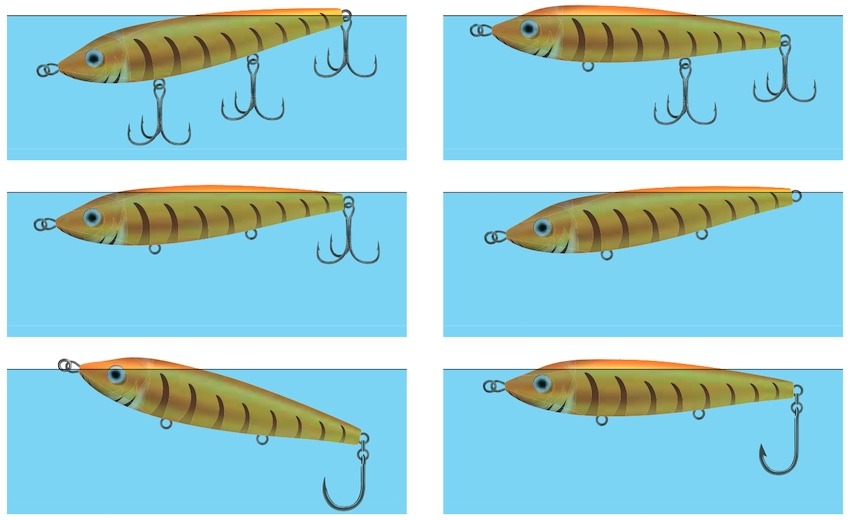
Hook size and weight will affect the action at your normal trolling speed. Increasing the size of the hook will slow down the action of Fishinator, Lyman, Tomic, and other plugs. Typically the plug comes with a hook gap that matches the width of the plug. If you increase the hook size, the gap increases, and this will slow down the plug action. The heavier the hook, the slower the action. You also can increase the weight by using hooks that are the same size but two to four times stronger. The stronger the hook, the heavier the material, which will increase the weight. For Tomic plugs, this only works if you do not pull the pin.
Loop Knot
With all these different ways of tuning a plug, you can use multiple techniques to help you adjust to the fishing conditions. I usually fish with a shovel nose plug with a hook that is slightly bigger than the width of the plug. I tie a loop knot for more action, or I tune a three-hook plug to a single-hook plug, then use a loop knot. The combinations are endless, so you can fine-tune your plugs to match any fishing conditions.
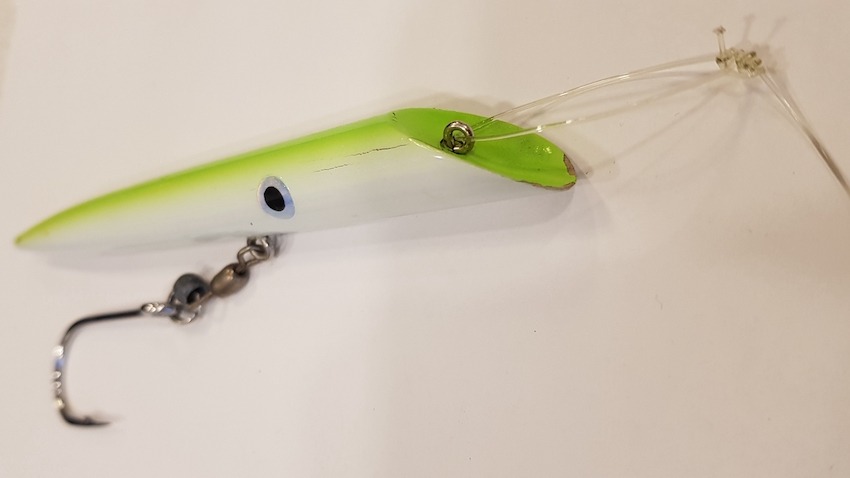
One last tip: Try to maintain the same speed every time you fish, so you know what action your plug is doing for a baseline.
This article appeared in Island Fisherman magazine. Never miss another issue—subscribe today!


